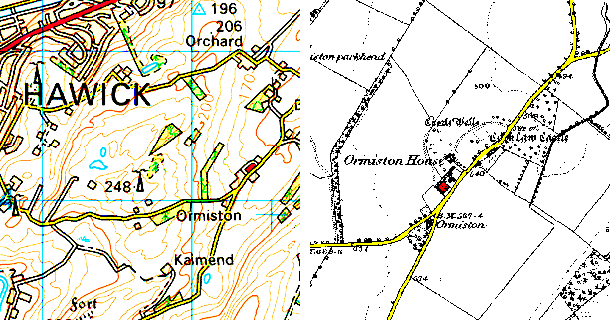| |
Ormiston House and Ormiston Farm are located a short distance south east of
Hawick, Roxburghshire. Hawick began around the 11th Century. It's name is said to
come from the Anglo Saxon - haga wic - the settlement, or wick, surrounded by the
hawthorn hedge. The name is pronounced "Hoyk."
A Norman family, the Lovels, arrived shortly after the Norman Conquest and
constructed the earthwork known as the Mote before building the more substantial
Tower in the 12th Century. Nearby the original building of St Mary's Church was
dedicated in 1214 by Adam, Bishop of Caithness. Location at a bridge over the
Slitrig Water was more important than a crossing of the marshy and malarial River
Teviot. The village remained small for centuries, overshadowed by the settlement
at Cavers a few miles east, which was owned by more influential families - the Baliols,
the Earl of Mar, and the Douglases. However in 1537, Hawick's lord, Sir James Douglas,
Baron Drumlanrig, gave a charter to the little town which allowed it to hold markets,
and this encouraged growth.
Today, Ormiston Farm is an attractive learning station for local high school field trips.
Farming is important to the Roxburghshire economy and students visit Ormiston Farm to
learn about current practices in modern agriculture. The Agricultural Revolution began
in the 1700's with the innovations of John Cockburn of Ormiston in East Lothian. Young
farmers are carrying on this tradition today
|
|




